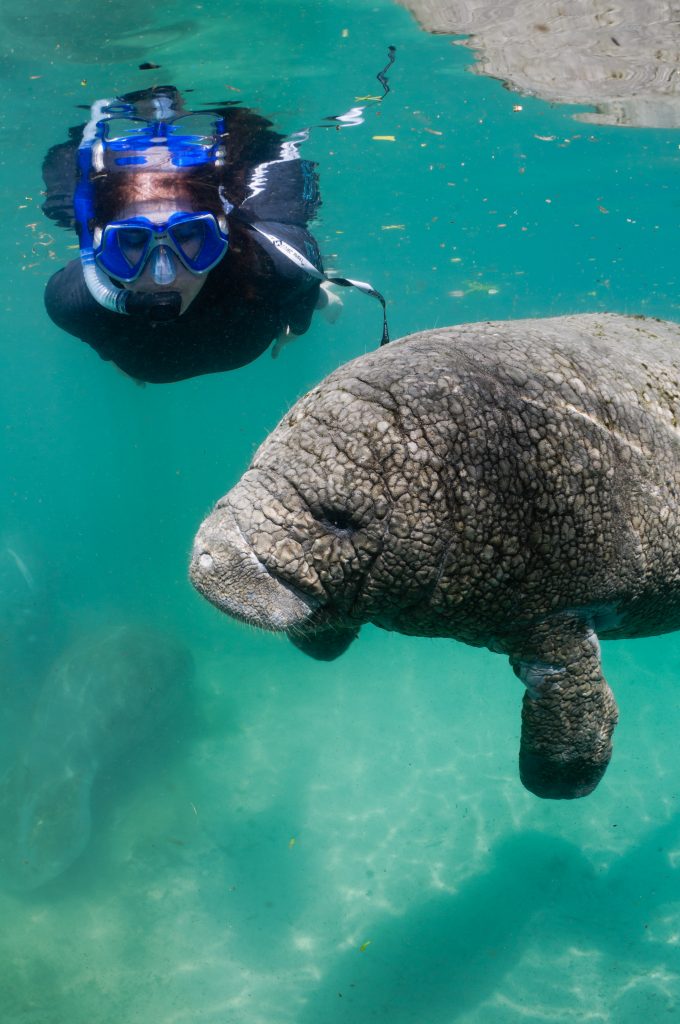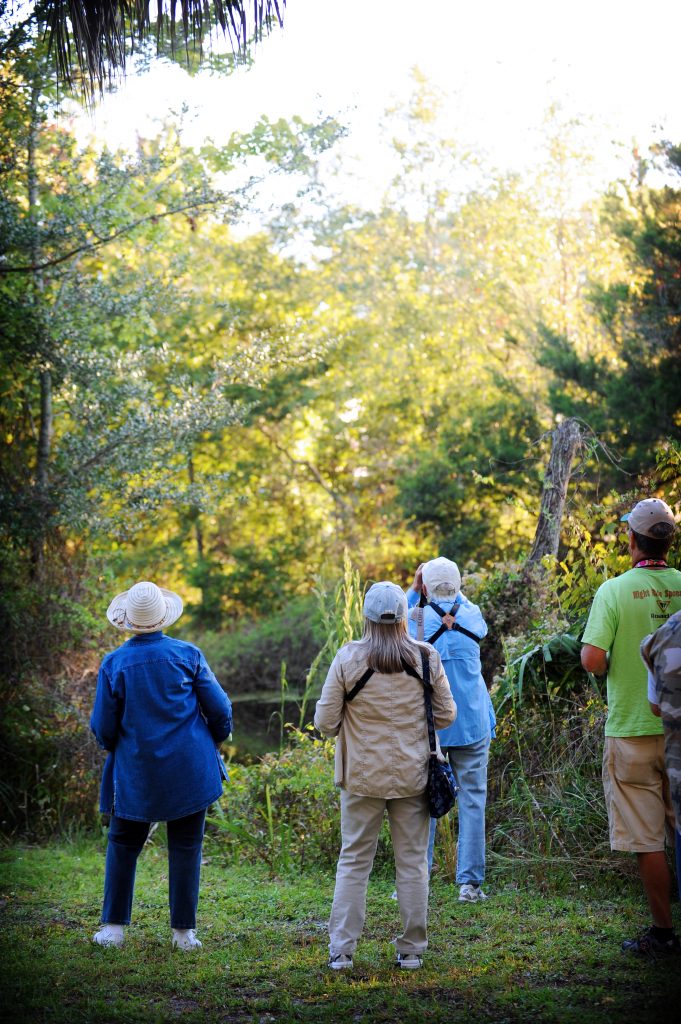Wildlife Viewing
Manatee Activity
Manatees are abundant throughout coastal and inland waters of Florida. During times of cold weather, manatees will concentrate in warm natural springs or in warm water discharges from power plants, both essential for their survival. Crystal River is special because it supports the largest concentration of manatees in a natural spring area. Concentrations of manatees in Crystal River are one of the highest in the State. Certain times of the year are better than others for viewing manatees in Kings Bay.
Boaters will find different speed zone signs posted in our rivers. Idle Speed means no wake and Slow Speed means a minimum wake. Manatee sanctuaries are closed to all public use from November 15 through March 31 to protect the manatees.

January – March
This is the best time to see manatees. The weather is at its coolest and manatees are the most concentrated. Sanctuary restrictions are monitored until the 31st of March, speed zones are in effect through April
April – August
As the weather begins to warm, and Gulf and river water temperatures rise above 72 degrees Fahrenheit, manatees move out into the Bay. Manatees then begin staging in the Homosassa, Crystal and Salt Rivers in preparation for their migration to summer habitats.
September – December
In October, as temperatures drop, manatees start to congregate in the headwaters of the Crystal and Homosassa River. Speed zones and sanctuary restrictions go into effect during this time. Late in December, manatees concentrate around the springs in Kings Bay.
Great Florida Birding Trail
By Julie Brashears, FWC birding trail coordinator
Crystal River National Wildlife Refuge is a largely aquatic preserve, so it comes as no surprise that one of the best ways to bird it is by canoe.
Thick hydric hammock surrounds the boat ramp, so bird the periphery for songbird migrants like hooded warblers before you launch your boat. A large vulture roost populates the boat basin, and as you follow the river towards the Gulf, don’t overlook the occasional bald eagle swirling on thermals with them. Along the river run, watch for skulking green herons and shy little blues at the water’s edge. From treetops, wood storks spy on anhingas that p
ly the main channel for fish. Calling prothonotary warblers and protective osprey on nests announce your progress down the river.
The freshwater river gives way to black needlerush saltmarsh, and the main channel is criss-crossed with tidal creeks leading back into the marsh. These are great fun to explore for clapper rails and sora, as well as shorebirds loafing on isolated mudflats.
Cautiously coax your canoe around corners to reduce the chance of flushing birds and to improve your viewing opportunities (good for both you and the birds).
Wintering ducks like bufflehead and hooded mergansers dive in the open water nearest the Gulf. Dog Island lies three miles west of the launch along the main channel. Restroom and picnic facilities are available here, so you can stop and relax before making the return trip upriver.
Airboats occasion this area, so be alert. The river is frequently shallow, sometimes nearly impassable when low tide conspires with easterly winds.
Directions: From the town of Homosassa Springs, drive south on U.S. 19 approximately six miles to the flashing light at U.S. 98. Turn right (away from U.S. 98) onto Miss Maggie Drive. Follow the road to the boat ramp/campground at the end, where you can launch your canoe.
The boat ramp is open 24 hours a day, (352) 563-2088. Birding is best in the mornings, October to April.
For more information,visit www.sandersonbay.com/citruscounty/birdwatching.html
